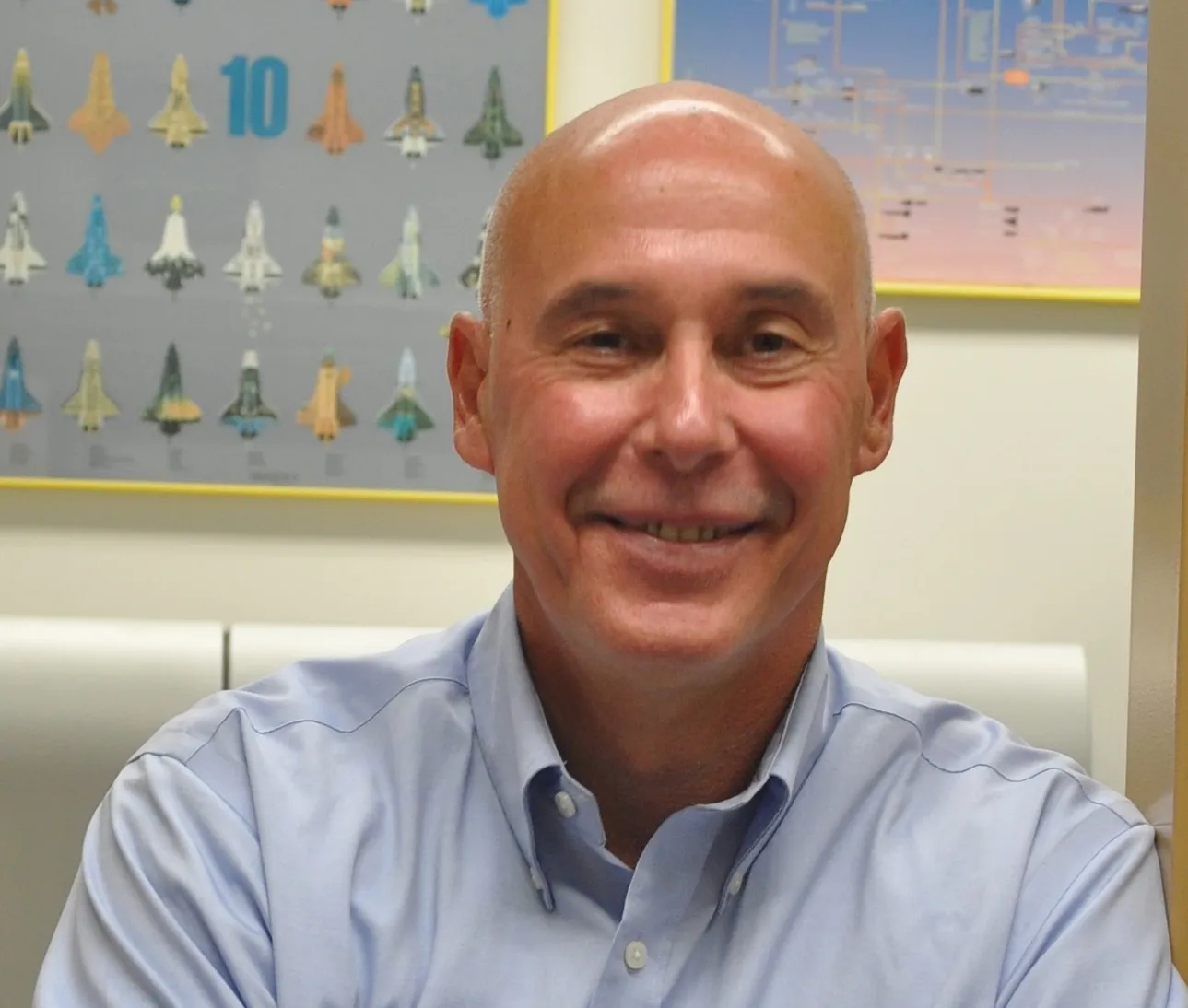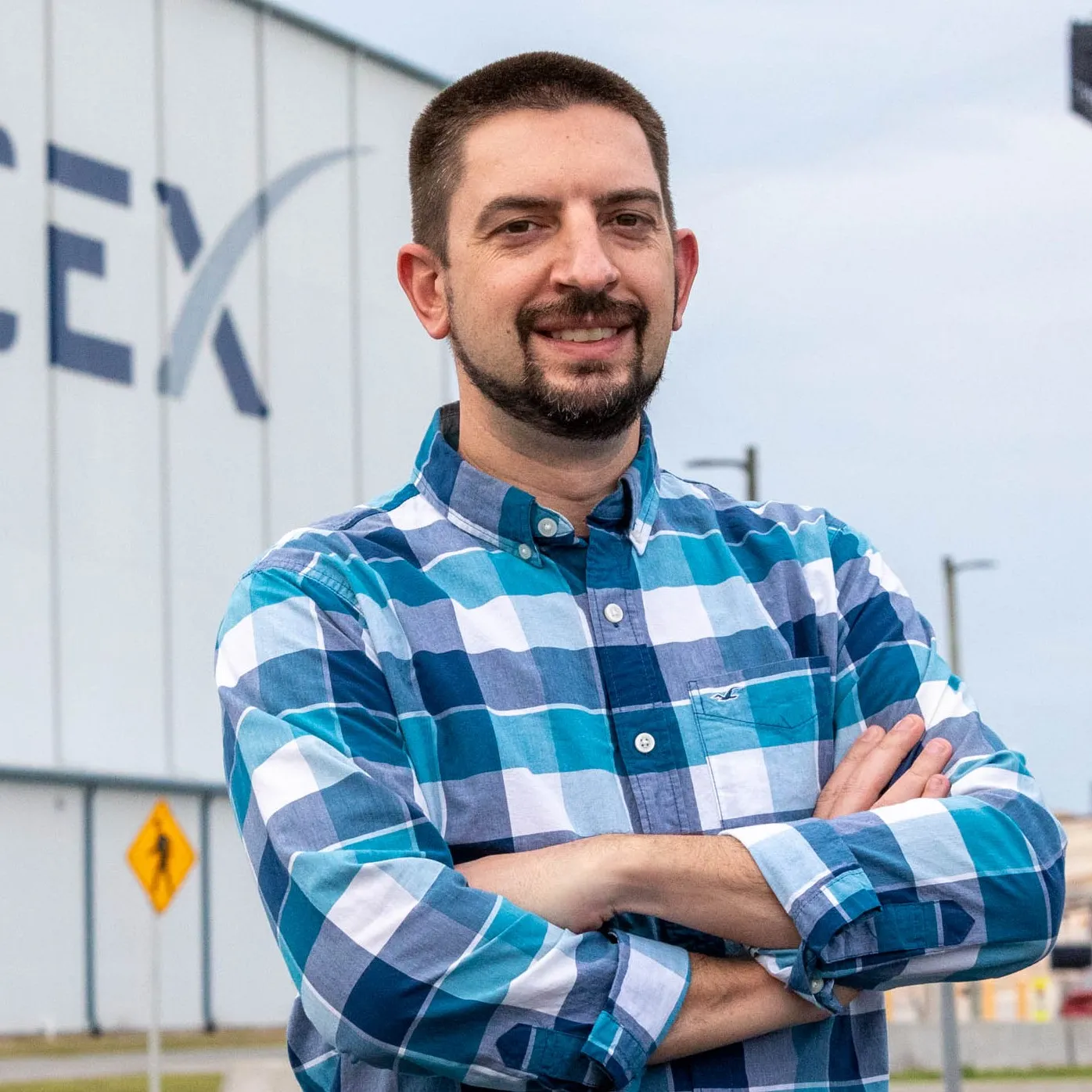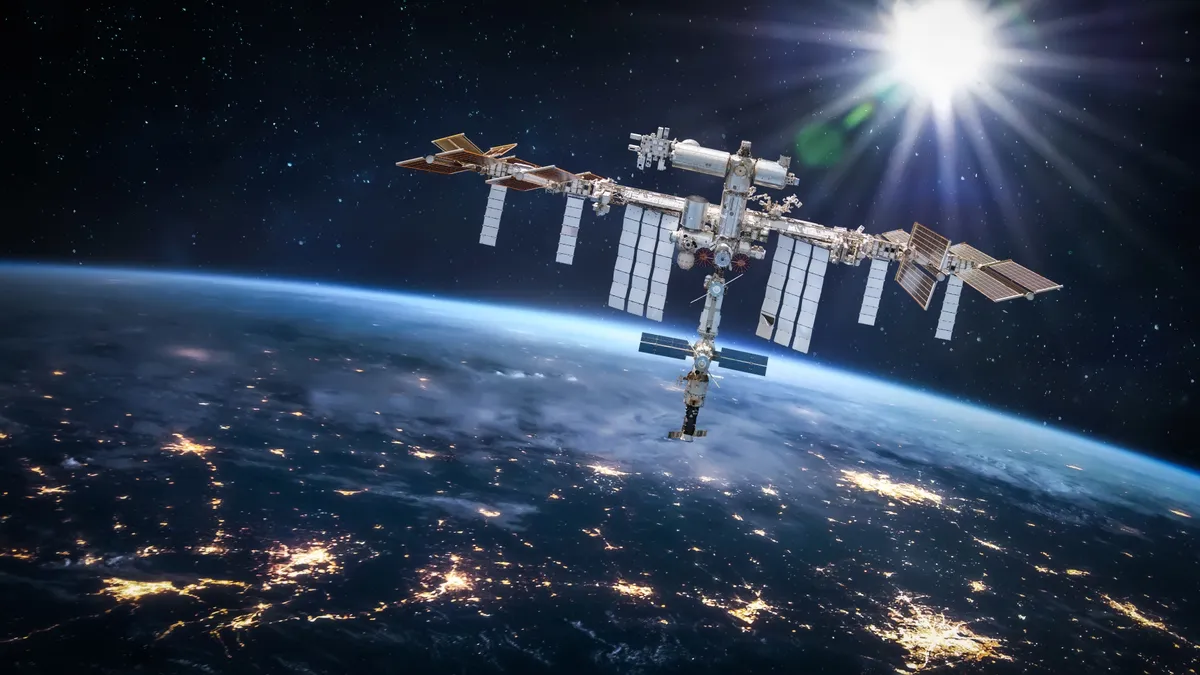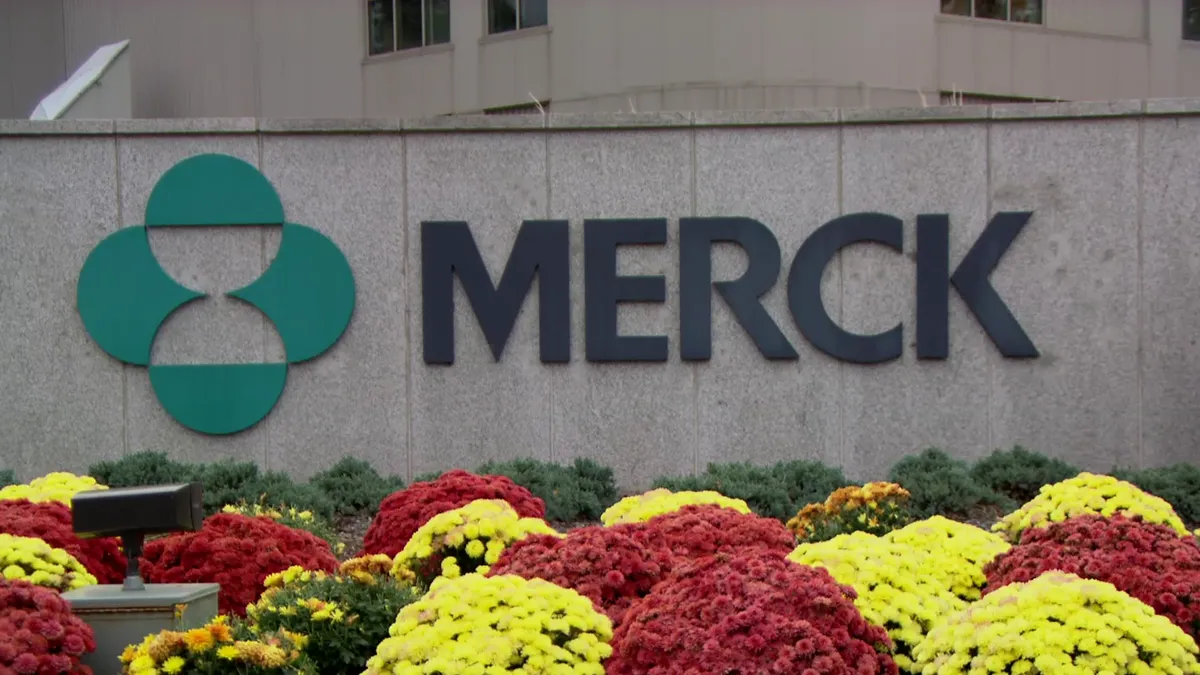If you time it right, you may be able to catch a glimpse of the International Space Station, which looks like a bright star speeding by at 17,500 miles an hour, 250 miles above the earth. This football-field-sized spacecraft reflects the sun’s rays, making it visible from the ground around dusk or dawn for just a few minutes before it disappears over the horizon. While sightings are fleeting, the ongoing research aboard the space station may have far more enduring effects on those below.
Astronauts aboard the station, which holds the world’s only microgravity laboratory, are conducting experiments for companies like Merck & Co. and Bristol Myers Squibb (BMS) that have the potential to improve drug development and manufacturing. Today’s research is limited by space constraints aboard the craft, but planned initiatives may open up broader opportunities in the future. Over the next decade, NASA is planning an expansion of space-based resources in collaboration with private industry to build infrastructure that could one day lead to improvements in drug delivery and manufacturing, and give a boost to fields like organ transplantation.
Venturing into space

Paul Reichert, associate principal scientist of structural chemistry at Merck, was among the first scientists to promote the idea of conducting an important segment of drug research — protein crystallization — in space.
NASA had a protein commercial crystal-growth initiative in the 1990s and approached Schering-Plough Corp., now Merck, about participating, Reichert said.
“They asked me, since I was a protein crystallization expert, whether I’d be interested in doing microgravity research on board space shuttle missions. Of course, I jumped at the opportunity,” he said.
While space research has faced some starts and stops over the years, today Merck is using the unique microgravity environment on the space station, a multinational collaborative, to study monoclonal antibodies as crystalline suspensions with the ultimate goal of making drug delivery and manufacturing safer and more convenient, Reichert said.
The microgravity environment in orbit is a far better setting to grow high-quality crystals because it reduces sedimentation, molecules move more slowly and scientists can precisely control temperature in experiments, Reichert said. Experiments on the active ingredient in Merck’s oncology drug Keytruda, for example, showed that particle crystals grown in space were smaller and more uniform than ones grown on Earth.
“We found that the flight experiment crystals were lower in viscosity and had better injectability properties than the comparable ground experiment,” Reichert said.
Merck was then able to design processes to mimic those results on Earth. Their research could provide patients with an easier, more convenient way to take monoclonal antibody crystalline suspensions. Today, drugs like Keytruda are administered in a cumbersome multi-hour infusion, but one day patients may be able to get the drug as a quick shot at the doctor’s office due to extraterrestrial research.
BMS is also looking beyond Earth’s atmosphere for answers to some of its scientific questions. The company has had a long-standing interest in exploring the potential advantages of a microgravity environment, said Robert Garmise, associate director of material science and engineering at BMS. Right now, it’s also involved in protein crystallization research.
“Now is the time for all the different companies in pharma to consider forming a consortium to share learnings and share experiences to really push forward the types of research that we're doing in space."

Robert Garmise
Associate director of material science and engineering, BMS
“The reason we're interested in crystallizing proteins (is because) it gives us an understanding of the protein structure and how the protein molecules interact with each other, which can inform things like stability (and the ability to develop) the compound. It's also a way to purify materials. On the small molecule side of things, we use crystallization to purge impurities and increase yields of our drug-substance process,” Garmise said.
Advances could also improve the manufacturing processes for biologics, which currently contains several inefficiencies, he added. Another goal is to improve drug stability, making medication easier to store and to reduce transportation and storage costs. While oncology is one area that could benefit from this research, Garmise said the company is “involved in a number of different therapeutic areas,” including immunology, fibrosis, cardiovascular disease and neuroscience.
Overcoming the challenges

Not surprisingly, conducting research in a low-orbit lab that can only be reached by spacecraft is challenging. It requires extensive planning and coordination that demands researchers work closely with astronauts at the space station, who may not be medical researchers themselves.
“Things need to be set up in such a way that they can be easily manipulated by somebody that isn't necessarily a scientist,” Garmise said.
And planning is crucial.
“There’s actually a process where you make a proposal and you work with the integration team to design (an) experiment,” Reichert explained.
These plans and supplies then go to the space station on one of the four annual Space X Dragon cargo spacecraft trips. When the experiment concludes, the findings go back into the Dragon and splash down on Earth, where the Merck team recovers and analyzes the work, Reichert said.
By design, space research, even among competitors, is collegial and collaborative.
“Part of our agreement with the International Space Station organization is that we share our results. We publish these results as much as we can so that we can share our experience with the broader community,” Reichert said.
What the future holds
Space-based research initiatives will likely expand in the future thanks to planned changes to the space program, including the closure of the space station. NASA plans to retire it at the end of 2030 but its demise is expected to herald an expansion of space research aboard several commercially developed outposts, the foundation for what may become a bustling space economy.
“Hopefully, there will be modules that will be dedicated to biomedical research. Since the cost and availability will be more easily obtained, I'm hoping that we could do the iterative type of experiments and the broader applications that we don’t have now,” Reichert said.
NASA and the U.S. government want the research facility to be a commercially viable national laboratory, ideally supported by a consortium of pharmaceutical companies because it “would defray some of the costs involved with doing this kind of research,” Reichert said.
But today the number of companies involved in space-based research is relatively small. In addition to Merck and BMS, some of the other companies that have conducted experiments on the space station include Amgen, Gilead Sciences and Eli Lilly and Co., Reichert said.
Some smaller companies are also taking advantage of the opportunity. LambdaVision, a Connecticut-based biotechnology firm, which has been awarded grants to promote its work, is using the space station to develop an artificial retina created using thin layers of protein. If the company is successful, it could restore sight in people whose retinas have been damaged by degenerative conditions.
Microgravity might also provide a better setting for 3D printing to create organs for transplantation or to test drugs to reverse bone loss since it is accelerated in space. Stem cell growth is another exciting area, Reichert said.
He hopes additional laboratory capacity might entice more companies to take the leap.
“I think it's worthwhile for a broader range of researchers to take advantage of this opportunity, to think about how their processes, in general, could benefit from doing microgravity research. It's exciting and it's challenging,” Reichert said. Potentially, even some drug manufacturing may one day be done outside the bounds of Earth, Garmise said.
However, to increase the availability of space-based research, it needs the right backing.
“Now is the time for all the different companies in pharma to consider forming a consortium to share learnings and share experiences to really push forward the types of research that we're doing in space,” Garmise said.
Ultimately, the lessons learned in this new frontier have the potential to spur progress.
“I'm really excited about the future of research in space. I think there's going to be a lot more opportunities to explore different applications for generating materials and products for use in space and also for use on Earth,” Garmise said.








